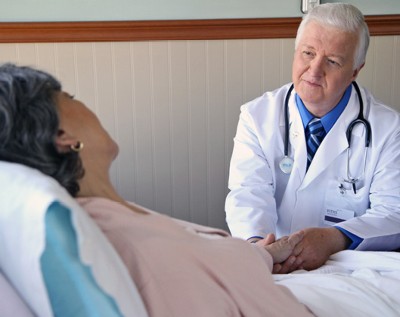Hospice Improves Quality of Life by Providing Comprehensive Services to Both Patients and Caregivers
In a review of relevant research in the field of end-of-life (EOL) care for cancer patients, the authors of an article published in the Journal of Clinical Oncology outline a number of key points highlighting the way hospice works to help patients with advanced cancer and their caregivers. In addition, the authors discuss ways in which EOL care can improve.
Priorities at the EOL for Cancer Patients
The authors note that several studies have aimed to explore advanced cancer patients’ and caregivers’ top priorities for the EOL. Among the most commonly expressed wishes are:
- Pain and symptom control
- Feeling well enough to spend time with loved ones
- Dealing with unfinished business and legacy
In response, “hospice care services have grown rapidly to support families and communities to care for people at home (including in skilled nursing facilities) through excellence in physical symptom control, psychological support, spiritual care, and support for caregivers,” the authors write.
Relieving Symptom Burden
“Hospice care improves symptom control in problems prevalent at the [EOL],” the review authors explain. Symptom relief for advanced cancer patients nearing the EOL often involves addressing one or more common symptoms, including:
- Breathlessness
- Fatigue
- Pain
- Delirium
“Good analgesia is often the priority for patients and their families above any other symptom,” the authors write, adding that evidence suggests hospice provides patients with superior pain management. They note that delirium, including cognitive changes, hallucinations, and disturbances in sleep/wake cycles, can be treated with excellent nursing care, by treating any reversible causes, helping orient the patient, and providing proper hydration and nutrition.
Ideal Integration of EOL Care
The review authors urge clinicians to discuss prognosis with rapidly declining advanced cancer patients and refer to hospice care. Ideal end-of-life care for cancer patients, they point out, includes:
- Competency in core EOL care skills for every health professional. This basic competency should include “recognizing the [EOL], understanding the principles of symptom control and interdisciplinary care, practicing patient-centered communication and shared decision making, having clinical skills in thorough bedside assessment, and fostering empathy and compassion.”
- Specialist hospice care. The authors validate the need for “a specialist hospice/palliative care workforce” to address more complex needs. Hospice use in the last months of life has been shown to be associated with fewer hospital visits and better symptom control for advanced cancer patients. Furthermore, hospice care can be provided at home, in another location considered “home” by the patient, or at a hospice inpatient facility.
- A team-based approach to care. Patients are likely to open up about more issues when they receive care from a hospice interdisciplinary team, the authors explain. “[G]iven the breadth of patient-defined needs at the [EOL], several health professionals working collaboratively will be essential to achieve the best possible patient outcomes.”
- Interface between hospice and other care. In many countries, most advanced cancer patients are hospitalized or switch between locations of care near the EOL; therefore, communication between care providers is crucial. “Ensuring that both clinical teams are aware of each other’s conversations with the patient and family is a fundamental challenge that persists even in an era with improving electronic records.”
Supporting Caregivers
“The way that caregivers are supported in their new roles is a fundamental of hospice care,” the authors note. Though sparse, evidence suggest caregivers benefit most from:
- Informational needs being better met
- Lower rates of depression
- Better ability to move forward with life after the patient’s death
“Hospice provides patients with the potential for a better quality of life, improved symptom control, and more time away from inpatient care,” the authors conclude, adding that since the majority of care for patients with advanced cancer falls to caregivers, “any additional support for them while fulfilling their role likely is to be of substantial benefit.”
Source: Currow, D.C., et al. (2020, March 20). Role of hospice care at the end of life for people with cancer. Journal of Clinical Oncology, 38(9), 937-943. DOI: 10.1200/JCO.18.02235

Check Hospice Guidelines
Get diagnosis-specific guidelines in our hospice eligibility reference guide.
Hospice Guidelines by Diagnosis Refer Your Patient
